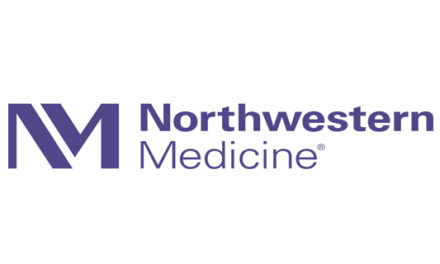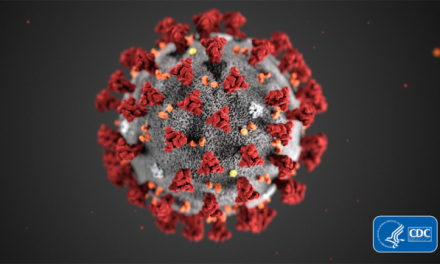
UI Health betting on integrated health homes

A pediatric care coordination program at UI Health has been approved to be one of the state’s first integrated health homes.
The initiative, aimed at integrating physical and behavioral health, is a key part of the state’s overhaul of behavioral healthcare in Medicaid.
Dr. Benjamin Van Voorhees, head of pediatrics at the University of Illinois at Chicago College of Medicine, told Health News Illinois that becoming an integrated health home was a natural progression for its CHECK program, which will expand to include adults and more individuals with significant behavioral health needs.
The CHECK program launched in 2014 with a nearly $20 million grant from the Center for Medicare and Medicaid Innovation. Its federal funding recently ran out, and Van Voorhees sees the integrated health home model as a way to help keep it sustainable.
In a recent interview, Van Voorhees talked about the future of CHECK and his hopes for integrated health homes.
Edited excerpts are below.
HNI: What is the CHECK program?
BV: CHECK was designed as a program to improve health outcomes, improve school attendance and social outcomes and reduce healthcare costs of children and young adults who are Medicaid recipients. The way the project was designed, it was meant for children or young adults who had at least one chronic disease with an elevated level of healthcare utilization, defined as either emergency room visits in the last year or a hospitalization.
The original target conditions were asthma, sickle cell disease, prematurity and diabetes… Eventually, we enrolled about 17,000 children and actually worked with a little over 6,000 over the course of four years from Sept. 1, 2014 until Aug. 31, 2018.
HNI: What have been the results?
BV: Over the course of those four years, we provided over 180,000 different services to these families, including psychological referrals, shelter-based referrals, other social services, health promotion, care coordination.
It was an attempt to create a comprehensive wraparound for families that would address social needs, mental health needs, medical care coordination needs, with the eventual goal that if we could help the families that have navigated those basic processes, they would be less likely to have a chronic disease exacerbation. And if they did have a chronic disease exacerbation, they’d be more able to use more lower cost, routine forms of care, like outpatient visits rather than emergency rooms.
HNI: Funding from CMS ended late last year. Why was becoming an integrated health home the next step for the program?
BV: There really were two possibilities. One is that it becomes an internal model for UI Health to improve health outcomes for children and young adults with various levels of risk. And the second concept for sustainability was that we would engage Medicaid managed care organizations as either a designated care coordination entity or as an integrated health home.
And I think that we’ve actually used all three of those strategies to create a sustainable model.
HNI: What are some of the changes that you are making to the program to fit the integrated health home model?
BV: When we originally developed the model, there were actually about 14 to 15 different specific categories of interventions that we did for people. For example, mental health, housing, legal services, social welfare.
It was very comprehensive because it was designed to test a fundamental hypothesis that you could provide for families on Medicaid who are really having meaningful levels of social and economic distress. That through assistance with all these different programs and models, their health would actually improve and their health outcomes would improve and their costs would go down.
The integrated health home was a little more specifically targeted around care coordination and integration of mental health and physical health services, and was originally built more around a model of social workers.
CHECK was built around having 6,000 patients and about 30 community health workers with five or six licensed credentialed healthcare workers. And so the original conceptualization was a little more focused on licensed providers or individuals with bachelor’s degrees providing a narrower group of services.
And so some of the things we were doing under CHECK didn’t necessarily perfectly relate to things with integrated health homes. So those are the things we might provide as a designated care coordination entity. Or we might provide within UI Health as part of our own population health work. So I think those programs that we developed with CMS are still going to go forward, but not all of them fit within the integrated health home framework.
HNI: Some providers expressed concern that the state was moving too fast with the implementation of integrated health homes. Do you not share that concern?
BV: I think the things that we learned from the CHECK project were that you can become very efficient at this by using a combination of licensed credentialed healthcare workers like nurses and social workers in tandem with community health workers with an advanced technology backbone.
What we learned in CHECK was how to actually automate a lot of the work. How to facilitate care coordination, using some processes that were partially automated to speed the delivery of services and make them more efficient.
And so for us, we were able to take that technology backbone we’d already built and the training manuals and models we already had, and the workforce we already had, and really redirect them into the models.
We felt that because of the help we received from the federal government in terms of this grant, that we were well positioned to really function as an integrated health home, even within the timeframe the state originally put forward.
Illinois Health News is a nonpartisan, independent news service covering the Illinois healthcare beat. Sign up for a free trial to the newsletter here.









